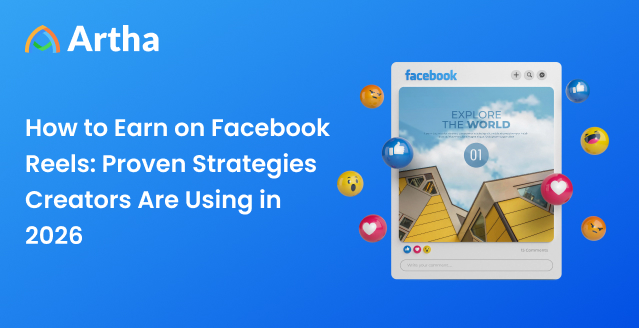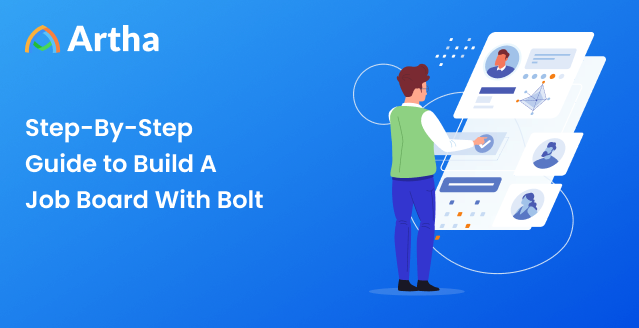Sometimes the best businesses are born from personal frustration. When Lior Neu-ner left Meta after five years as a software engineer, he had no idea his next venture would come from his wife’s job search struggles.
“She just kept complaining that she wasn’t finding enough jobs or she had to look in so many different places.
Too many tabs. Too many listings. Too much noise.
She’d spend hours scrolling through sites that all looked the same, competing with hundreds of applicants for every role.
That frustration became the catalyst for Remote Rocketship, a job board that now attracts over 500K+ monthly visitors from Google search alone, ranking higher than some of the largest players in the space.
The most remarkable part? Lior started with zero SEO knowledge.
By the end of this story, you’ll not only know his exact 7-step SEO playbook, but you’ll also find a special Bonus for Our Readers 👀
Watch the whole episode now.
The “Zero-to-500K” Map
When he started, Lior knew nothing about SEO.
His spark came from a single tweet by Thor (founder of Four Day Week Jobs).
That tweet explained, step-by-step, how to structure job posts for Google.
He thought, “That’s it? I can do that.”
And he did.
Lesson #1: You don’t need to know everything about SEO. You just need to know the right 10%.
Here’s How He Scaled From 0 To Half A Million Clicks A Month.
Step 1: Nail the Schema (Your Invisible SEO Engine)
If you run a job board and don’t have the JobPosting schema, you’re basically whispering to Google instead of talking.
Lior discovered this early:
Every job post needs the metadata Google expects: title, company, location, salary, date posted, valid through, and apply URL.
“Google literally tells you what it wants. Just give it that.”
The Biggest Mistake Job-Board Owners Make?
Skipping optional fields.
They think “optional” means “unnecessary.” But every missing field is a missed keyword, a lower trust score, and a reason for Google to pass you over.
Pro tip: Treat your schema like a resume. The more complete it is, the more credible you look.
Step 2: Build a Web Google Can’t Ignore
When you publish a job, you want Google to crawl it fast.
But there’s a catch: the Indexing API only lets you ping a limited number of pages per day.
So what did Lior do?
He made sure every page was connected to other pages.
- Every job is linked to 5 related jobs.
- Each related job is linked back to a category page.
- Each category is linked to broader pages like “Remote Tech Jobs,” “Remote Marketing Jobs,” and “Remote Jobs in India.”
Result?
Google doesn’t just crawl one page; it follows your web of links and indexes hundreds.
Lesson #2: Internal linking isn’t just for users; it’s fuel for Google’s curiosity.
Step 3: Create Landing Pages That Match Real Search Intent
Most job boards rely on auto-generated filters.
Lior built intent-based landing pages, the ones that sound like actual Google searches:
- Remote Data Analyst Jobs
- Remote Jobs in Germany
- Remote Product Manager Roles (Full-Time)
Each page wasn’t just a list of jobs; it had:
- A short explainer (What does a remote data analyst do?)
- Salary insights
- A few FAQs
- Links to related searches
If you want to win SEO, don’t just dump jobs. Teach Google that you understand the query behind them.
Pro tip:
Combine intent dimensions:
- Role × Country
- Role × Contract Type
- Role × Industry
But make each page unique. No lazy copy-paste.
Step 4: Learn from Competitors (Manually)
Forget $200 SEO tools. Lior’s approach was simple:
- Search for your keyword on Google.
- Open the top 10 results.
- See what information they include that you don’t.
- Merge the best of all worlds.
“You can’t beat the algorithm if you don’t understand what it’s rewarding.”
Takeaway: Competitor research isn’t about spying, it’s about pattern recognition.
Step 5: The Monetization Twist
Lior tried the traditional route: charging companies to post jobs.
It flopped. Only one person bought a listing.
Then he flipped the model: charge job seekers a small subscription fee for access to all jobs.
He tested it with 10% of his users, and within 2 weeks, 10 people paid $10 each.
Do the math.
He rolled it out site-wide and hit $1,000/month profitably.
“It wasn’t about making millions. It was about proving the model worked.”
Lesson #3: Don’t be afraid to charge where the value actually lies.
What Tools He Actually Uses
No fancy stack.
Just:
- Google Search Console, his daily dashboard.
- Ahrefs (sometimes), to check keyword opportunities
- ChatGPT to speed-write content for new pages
- Custom code to automate indexing pings
That’s it.
No paid ads. No marketing agency.
He even dropped his $3,000/month backlink agency because, in his words.
“Most of them don’t build links I’d be proud to show Google.”
Step 6: The SEO Truth Nobody Talks About
SEO isn’t fast.
You won’t see results in a week or even a month.
“I don’t really run experiments,” he said. “By the time SEO results show, I’ve already forgotten what I changed.”
And yet, he’s winning.
Because consistency beats cleverness.
Ship small improvements weekly.
Let Google do its slow magic.
Step 7: The Real Metric That Matters
Lior doesn’t track “DAU,” “engagement,” or “followers.”
His only KPI: profit.
“Revenue compared to cost. Grow that number without overspending.”
His stack costs are laughably low.
Everything he earns goes back into growing the site.
Final Advice for Job-Board Founders
If you take just one thing from Lior’s story, let it be this:
SEO isn’t complicated. Start small. Ship schema. Add related jobs. Build pages that answer real searches. You don’t need a thousand pages; you need ten great ones.
The lesson isn’t about SEO; it’s about persistence.
A job board is a slow burn. But when it catches, it becomes an engine that runs forever.
Lior’s Quick-Action Checklist
- Fill every JobPosting field (even optional ones).
- Add related jobs under every post.
- Build intent pages (Role × Country × Contract).
- Write unique copy, FAQs, and salary insights.
- Submit through the Indexing API.
- Interlink everything.
- Track in Google Search Console.
- Remove stale jobs weekly.
- Don’t overpay for backlinks.
- Focus on profit, not perfection.
Btw, if you want to check out Lior’s SEO course made specifically for job-board owners, check it out here.
Why This Matters for Creators
If you’re building a job board today, especially with a no-code platform like Artha, you already have the foundation Lior spent months building.
Artha comes SEO-ready, preloaded with 4M+ jobs, and lets you launch those role/country pages instantly.
Which means you can skip straight to the fun part: experimenting, optimizing, and monetizing.
Because every big story, like Lior’s, starts the same way:
With one problem that frustrated you enough to fix it.
To all our readers, we’ve got something special for you.
Lior is offering an exclusive 20% discount on his JobBoard SEO Guide, a complete course built specifically for job-board founders who want to grow organic traffic the right way.
Use the promo code “SEO20” to grab your discount and start learning directly from one of the best in the game.
Your Next Steps
If Lior’s story has you thinking about starting your own job board, here are his key takeaways. Keep in mind: if you’re starting with a no-code, AI-powered job board software like Artha Job Board, you don’t have to wait that long. It comes SEO-optimised and preloaded with niche-specific job ads, so you can start faster and still make more money.






